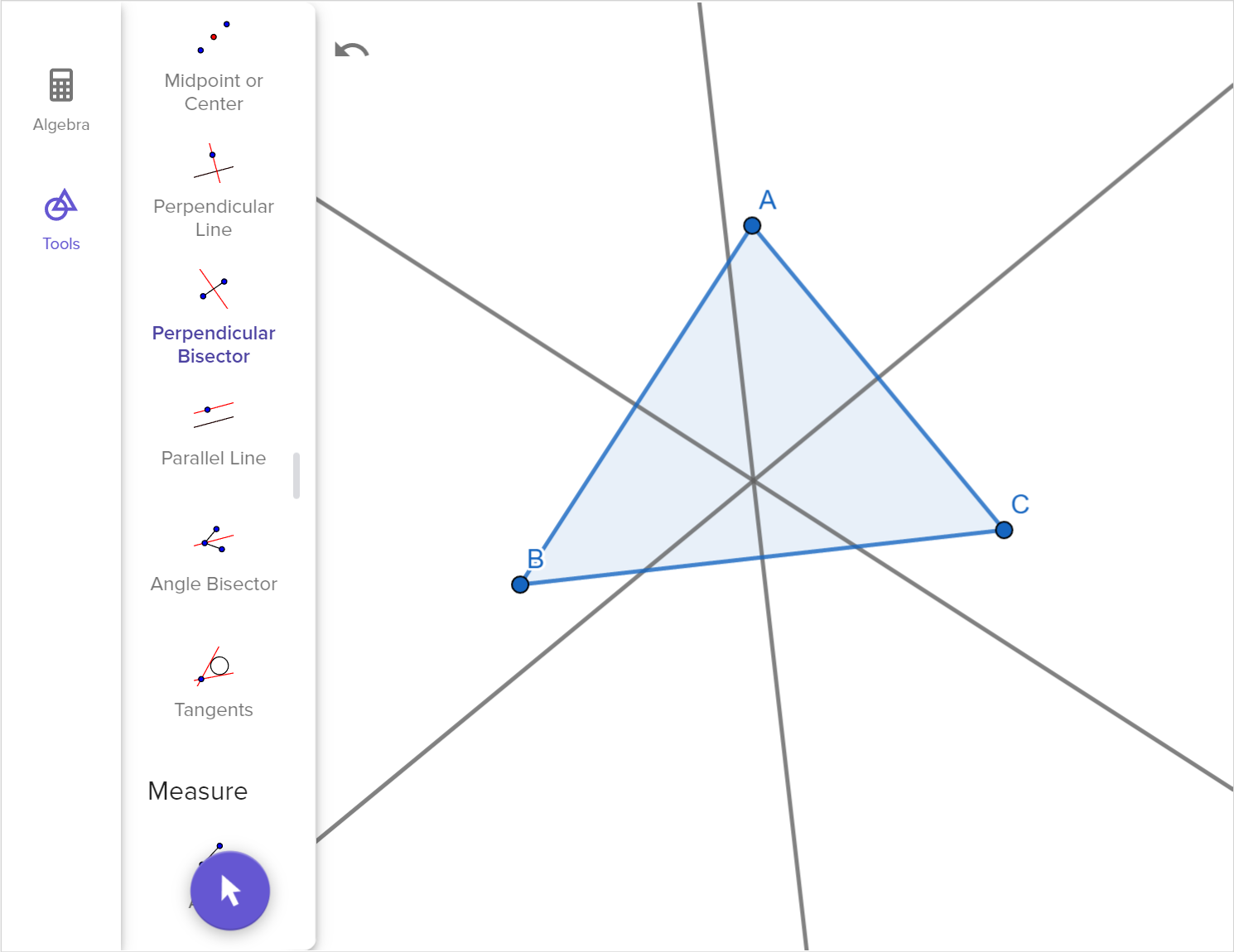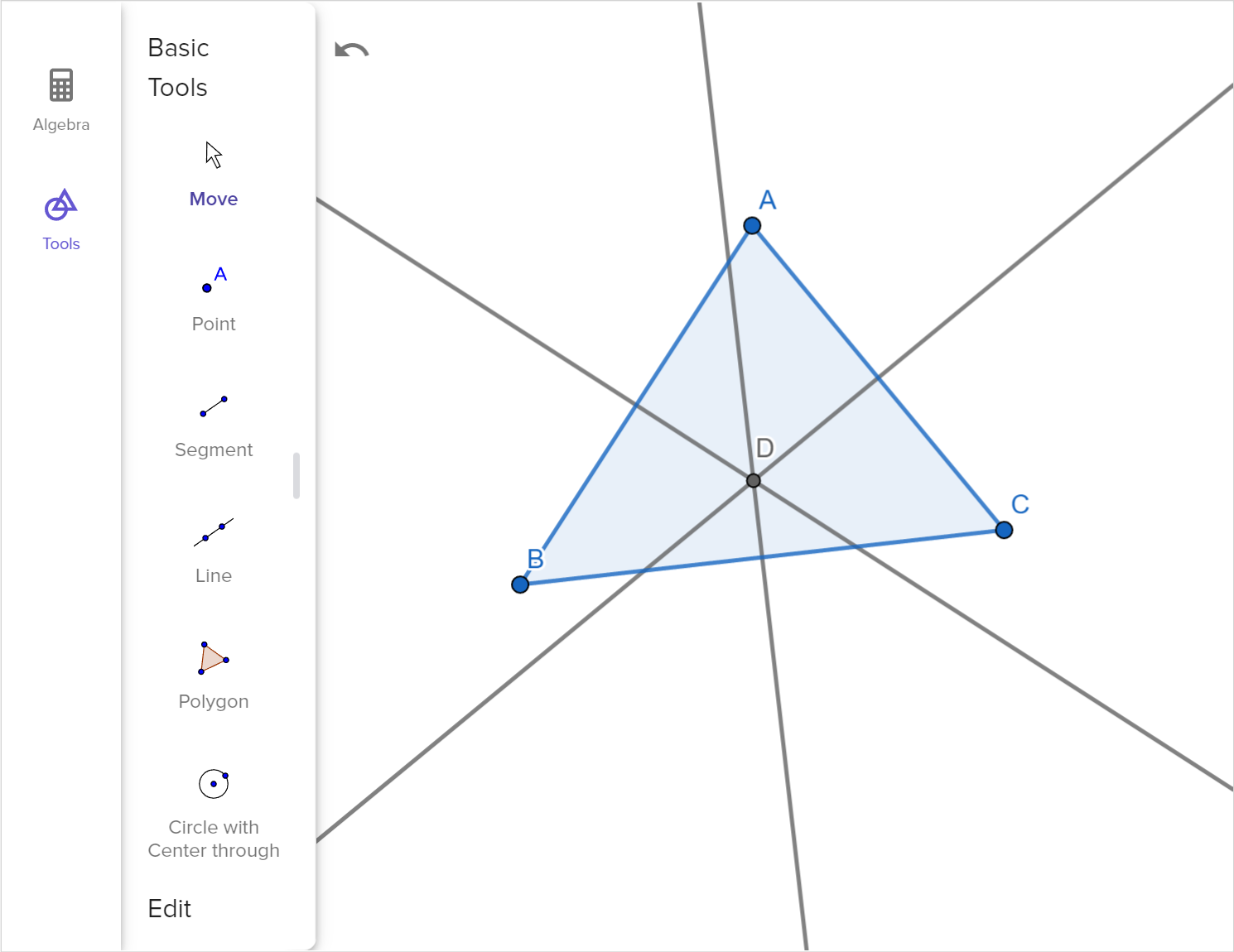11.04 Inscribed angles and polygons
Introduction
We learned about several theorems related to chords and angles in the previous lesson. When two chords share an endpoint, they create an angle within the circle. This lesson will explore angles created by chords that share endpoints and the theorems specific to these cases.
Inscribed angles and polygons
Angles formed by chords of a circle are known as inscribed angles.
Multiple inscribed angles which share segments can form an inscribed polygon.
When a polygon is inscribed in a circle, we can equivalently say that the circle is circumscribed on the polygon.
A circle can also be inscribed into a polygon:
Again, we can refer to this equivalently by saying that the polygon is circumscribed on the circle.
Examples
Example 1
Construct a square inscribed in a circle.
Example 2
Construct the circumscribed circle whose center is the point of intersection of the perpendicular bisectors of each side of the triangle (the circumcenter).
Example 3
In the diagram below, O is the center of the circle.
Solve for the values of p, q, and r.
A polygon whose vertices lie on the edge of a circle is called an inscribed polygon. We can also say the circle is circumscribed on the polygon. To construct an inscribed polygon, we use perpendicular bisectors.
When a quadrilateral is inscribed in a polygon, the opposite angles are supplementary.
Properties of inscribed angles
Exploration
Rotate the points around the circle.
- What relationship do you notice between the central angle and the inscribed angle?
- How does this relationship translate to the inscribed angle and the arc it intercepts?
The following theorems relate to angles inscribed in circles:
Examples
Example 4
Prove opposite angles of an inscribed quadrilateral are supplementary.
Example 5
Given m\angle CEB = 4x + 11 and m\angle CDB = 12x - 5. Find m\angle CDB
Example 6
Solve for x.
The measure of an inscribed angle is half the measure of the intercepted arc. If two inscribed angles intercept the same arc, the angles are congruent.





